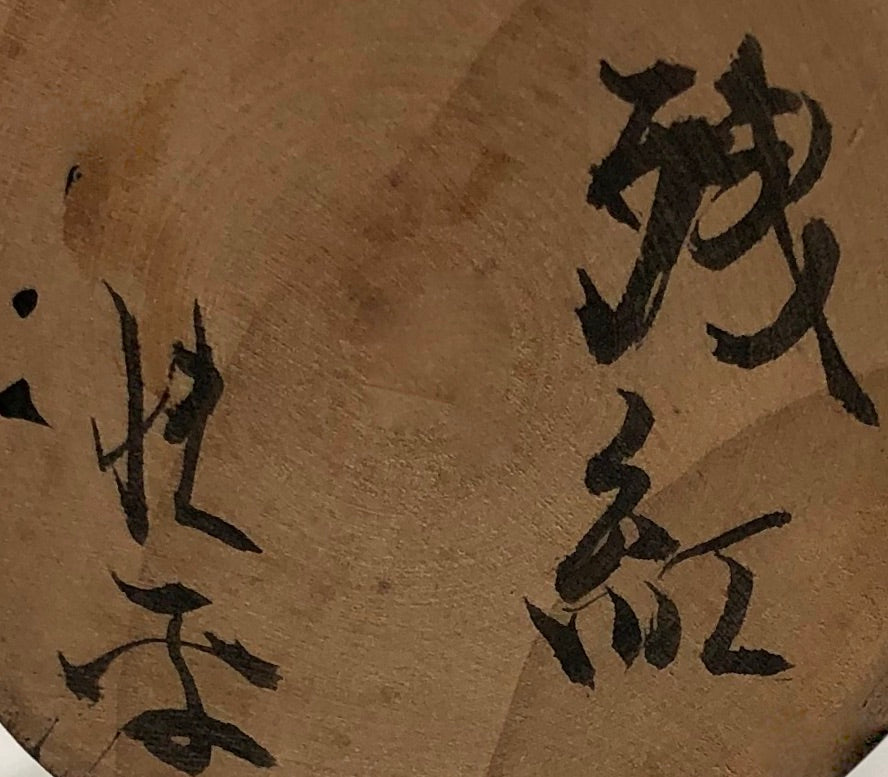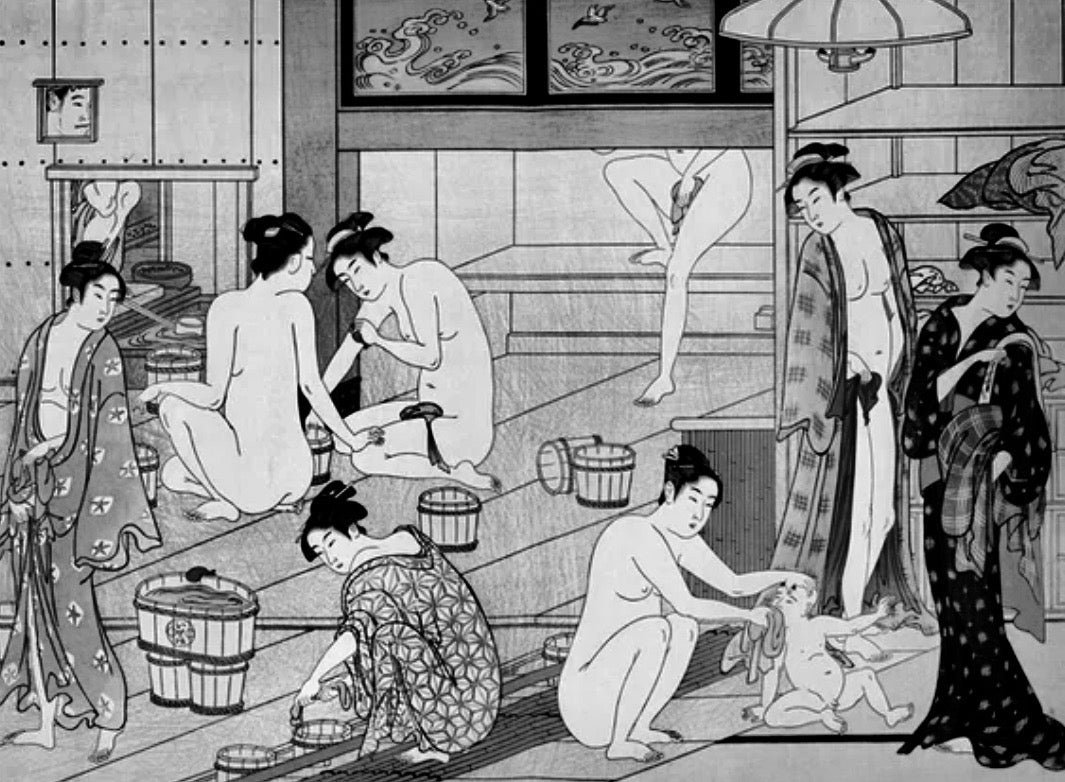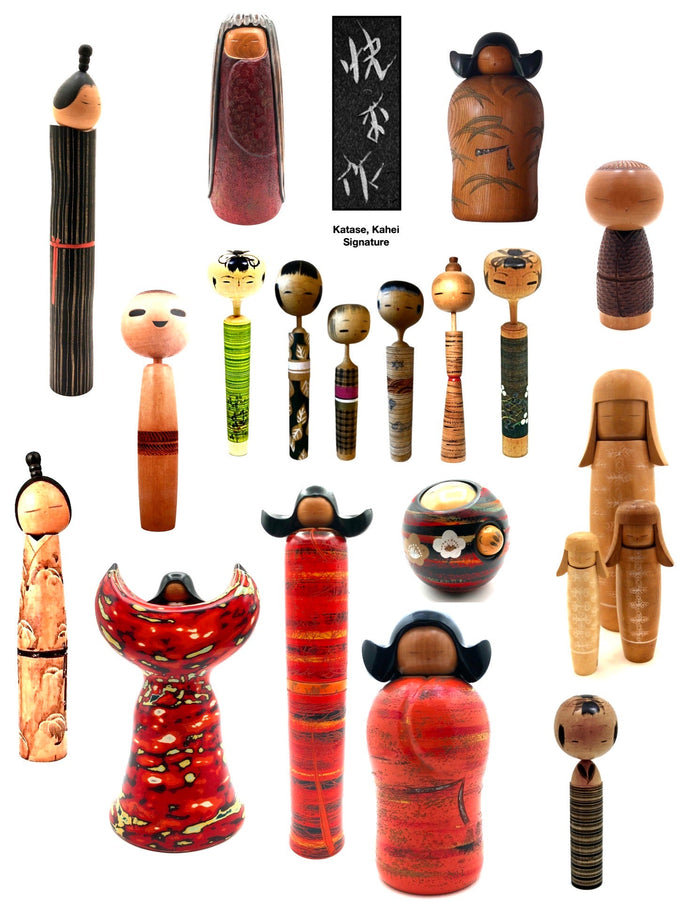



Vintage Creative Kokeshi Wearing a Yukata
Dimensions: 12-1/2”h
Yukata, a casual version of the Kimono has become an inspiring subject in all forms of art, and particularly in Kokeshi doll making. Kokeshi dolls have traditionally been sold at Japanese Ryokans/onsen’s which featured scenes on Kokeshi reminiscent of past centuries. This type of doll became very popular with Kokeshi woodcarvers because it was a type of souvenir that was purchased by the Japanese guest and taken home.
This rare, unusual and thin Kokeshi is styled based on the Edo period and made of dogwood. It portrays a woman wearing a vertical striped Yukata in grey and black, and incorporates a unique narrow red sash with bow and carved into the wood surface. Her head is looking downward with a simple expression given to the face with the use of small sleepy eyes and eyebows. On this particular Kokeshi, a hair style reminiscent of the past called a Taka-shimada illustrates the diverse and uniqueness of individual taste of the period. Artist unknown the piece is fully signed on the bottom. This doll was featured in A Collector’s Guide: Traditional and Creative Kokeshi and Toys.
Condition: Excellent, beautifully preserved doll, in original condition with no chipping, cracking or discoloration. .
NOTE: The name Yukata comes from the word ‘yu’, (bath), and ‘Katabira’, (under garment) made of cotton, linen or hemp. Yukata or bath clothes are worn after bathing in a communal bath, functioning as a quick way to cover the body and to absorb remaining moisture. This all began over 1,000 years ago when people wore it to-and-from the bath. Yukata is a garment that the Japanese have invested a great deal of ingenuity in developing, as it is an ideal casual wear for bathing. It was specifically worn in the hot and humid summers as a cooling garment. Yukata typically show a range of motif from solid bright colors, large and small seasonal floral designs, kanji characters, fans, wave & sea designs, clouds, dragons and geometric designs.

Artisan
Woodworker: Katase, Kahei
1922-2015
Biographical History:
Katase-san was born in Kanazawa prefecture in 1921 in a region known for its beautiful wooden marquetry crafts. Katase-san, the son of a Kijishi, (woodworker), began making creative Kokeshi in 1946. He won the first Prime Minister’s Award in 1954 at the ‘All Nippon Kokeshi Competition’. Along with many of his fellow Sosaku artists, Katase-san was a soldier and perhaps turned to creative Kokeshi-making to assuage the rigors of a long-fought war. Since 1962, he served as a judge at the Kokeshi Contest in Japan. In 1955, his work was dedicated to Her Majesty the Empress. In 1970 he was awarded the holder of Excellent Technique and was named a member of Meiko-Kai. He went to the United States in 1973 to direct the overseas exhibition in St Louis, where he was introduced through a television program at Missouri State. He was a member of the Cultural Properties Protection Committee of Hakone Town and a member of the Nippon Kokeshi Artistic Handicraft Association.
Collector's note – descriptive qualities, standard characteristics & ornamentation styles:
Many of his pieces are differently treated, with the natural contrasting head, and the natural grooved and stained body. He illustrates obi, inset into the doll with a hemp motif, (In early times, “asa” was an important source of cloth, and hemp leaves themselves formed the basis of a variety of hemp patterns). History tells us that the ‘God of Hemp’ is revered at Oasahiko Shrine in Tokushima. He additionally renders spring with cherry blossoms, wheat, trees, and stars to give character to his dolls. He seems to enjoy the rendering of long flowing unbound hair, (taregami) and details such as the inlay of silver motifs on the body.
And finally, it is unusual to see a doll made of three bulbous forms that compose the body and head, utilizing different woods to express the desired detail.
Katase focuses on what is known as “one-off” dolls turned from one piece of wood and detailed throughout the figural form. They primarily illustrate the “new” styles of Japan of the 18th century when the Dutch East Indies Trading Company influenced Japanese everyday life and customs. Katase-san is a master of lacquered color finishes incorporated with detailed carving of elements in the natural environment. Buddhist figures, which are intricately carved, are another style by this artist.
Explore & Learn More about Woodworker: Katase, Kahei